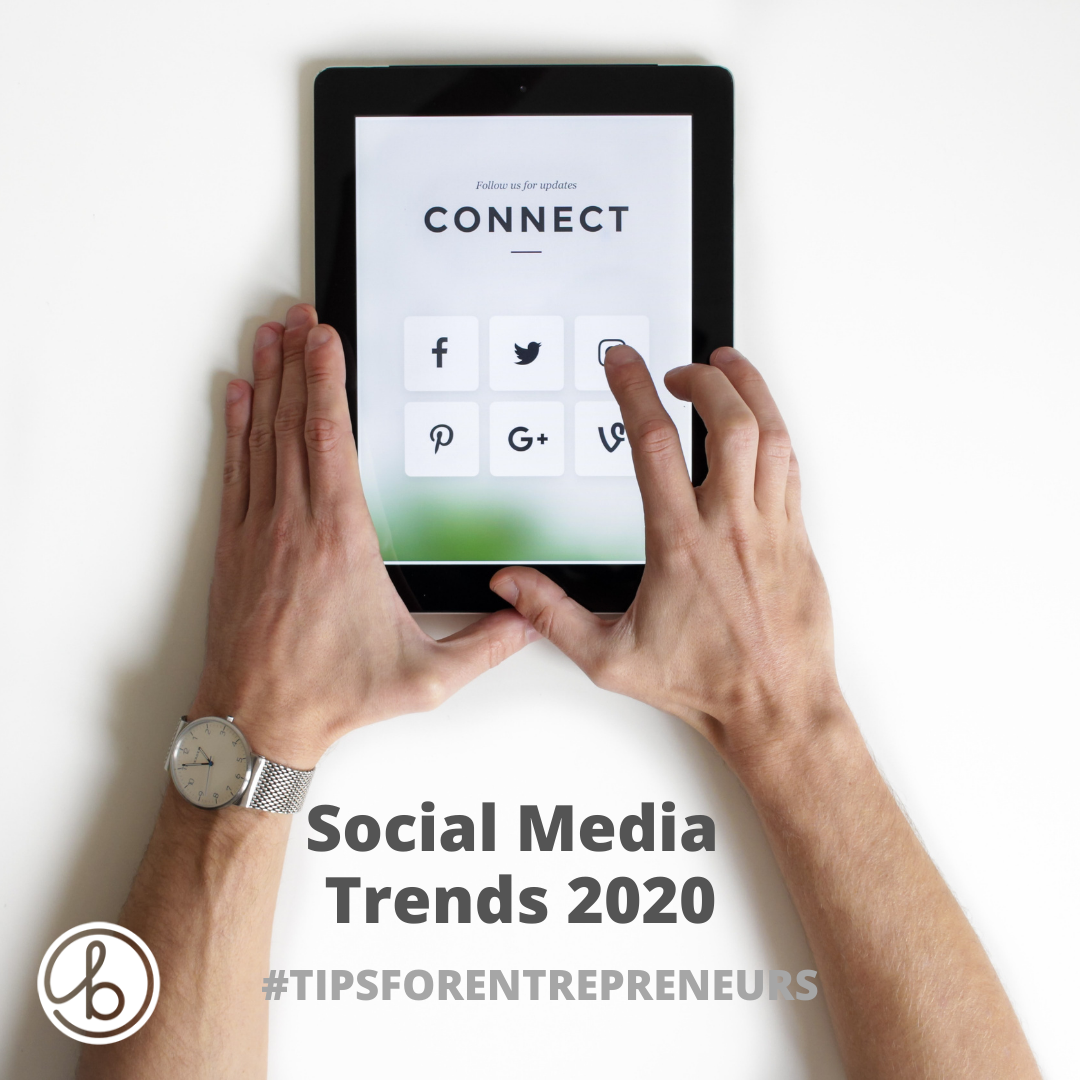2020 Social Media Trends

We’ve identified 7 key 2020 Social Media Trends that are essential to adapt your business strategy.
2020 has been a pivotal year for Social Media as many businesses have been forced to switch online. Identifying which platform is best for your brand is essential to develop a social media strategy that delivers content your audience will want to see.
1. Video content will prevail
Videos on social media are a great way to create engaging content for your audience that will capture their attention quickly. They are an excellent method of advertising new products and promotions or to share behind the scenes content. Whether short or long videos, identify a platform that aligns with your business and create more personalised content for your customer. For example, short form videos are great for Tik Tok or Instagram and Long form are perfect for YouTube. The best thing about video is that it can be made without a large budget. Check our article here where we explain how to create successful video marketing on a low budget.
2. Interactive Instagram stories are becoming more popular
Interactive Instagram stories can help increase engagement with your audience. It allows you to achieve two things: First, get feedback from your audience on products or promotions to understand what your customer wants to see. Second, it allows you to connect with your audience in a way that increases trustworthiness as the customer will feel the brand cares about their opinion. Add a poll or question, hold a Q&A, or add a countdown for a contest! Incorporate the results in your next advertisement and see how this can increase your brand sentiment.
3. User-generated content (UGC)
UGC is crucial to increase brand authenticity and trust and it’s completely free! Share photos of products that your audience has bought or stories of users that have used your services. Take time to develop a strategy that will motivate your audience to create content and tag the brand to get featured on your page. Remember, your audience should be the focus of your content strategy.
4. Instagram to remove likes
Instagram may remove likes at some point in the next year and we need to be prepared. There are many metrics that are available on Instagram and it’s important to identify which are relevant to your brand. Pinpoint new metrics for measuring ROI, focus less on vanity metrics and more on actionable results. For example, Instagram ads provide clear measures of ROI. Other metrics that can be used include reach, saves, sales, engagement, and traffic.
5. Don’t underestimate the power of micro influencers
Micro influencers can bring more value and provide powerful results while keeping costs low compared to ad campaigns. You also have the opportunity to work with multiple influencers and target different customer segments through each influencer’s community. Another benefit is you can minimise the risk of working with fake profiles of mega influencers which can be very wasteful. Working with micro influencers allows you to increase inclusivity and transparency with your audience. Start by forming a relationship with the influencer for you to get to know them and for them to get to know the brand.
6. Social Media as Customer Service
Social media has become the go to place for customers to reach a brand when any issues arise. By providing customer service through social messaging, brands can create a quick and easy way to interact with customers to help provide support on matters that can be easily solved. This can have a large impact on brand sentiment as customers tend to have higher satisfaction when waiting time is reduced. Customer service is essential to the business, if you’ve only got a small budget, consider adding a chatbot that will still allow you to provide service out of office hours.
7. The Social Media Wellness Movement
We can’t ignore the digital detox movement, take time and focus on quality messaging over quantity. Social listening is a great way to understand what your customer wants to see which you can incorporate and create more personalised content on social media. Monitor your competitors and be on the lookout for any changes in engagements and what the root cause may be. Focus your conversations on content that matters the most to your audience.
—
✨ Which trend are you most interested in? ✨
